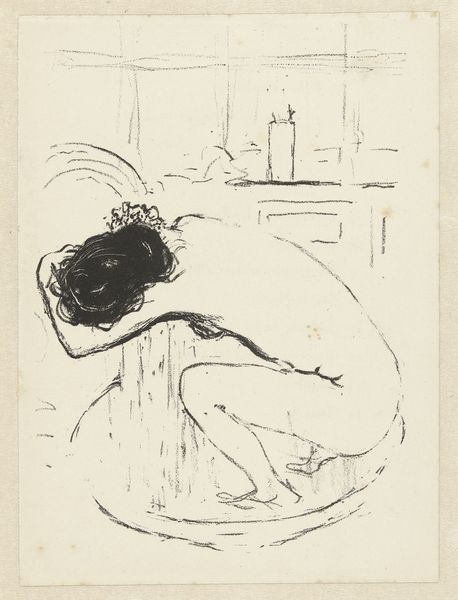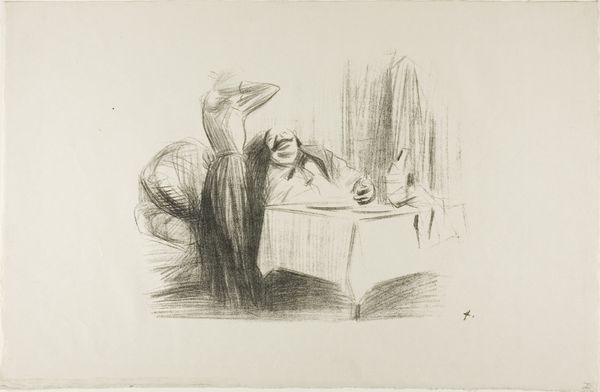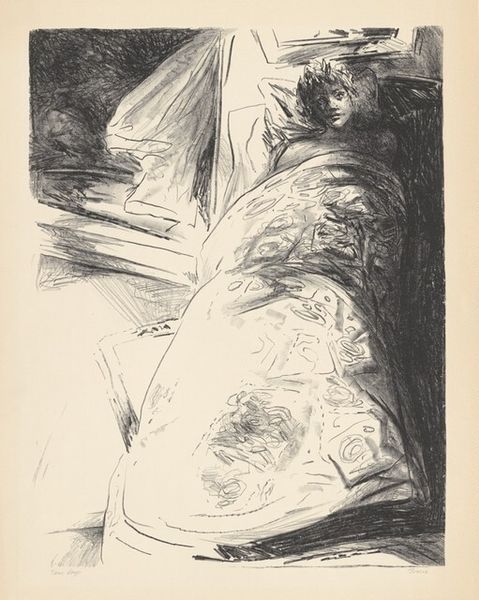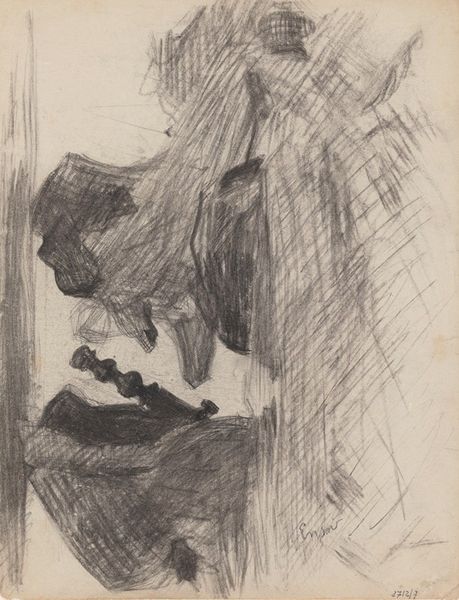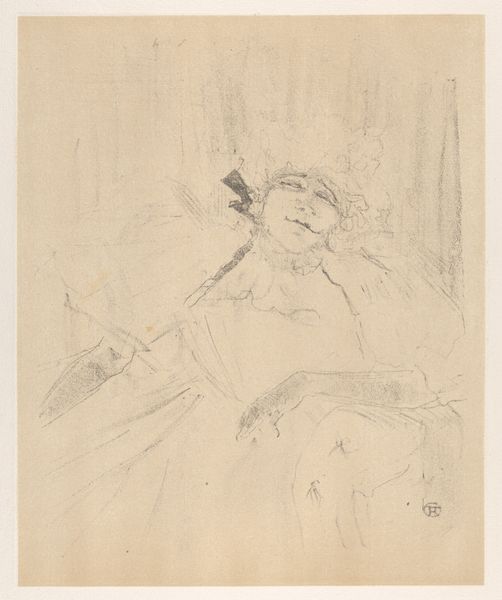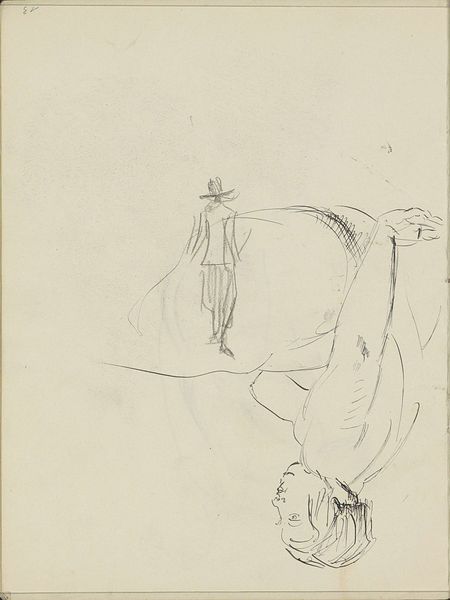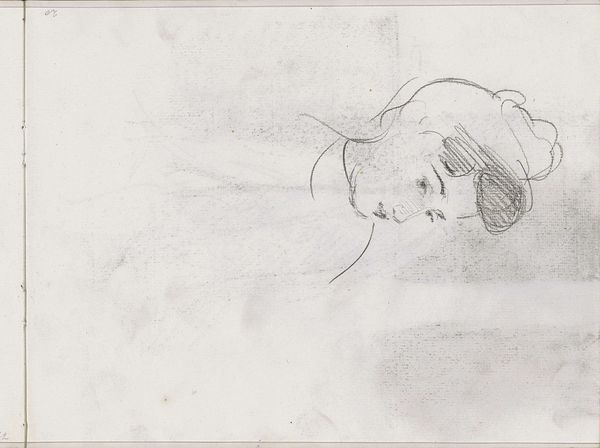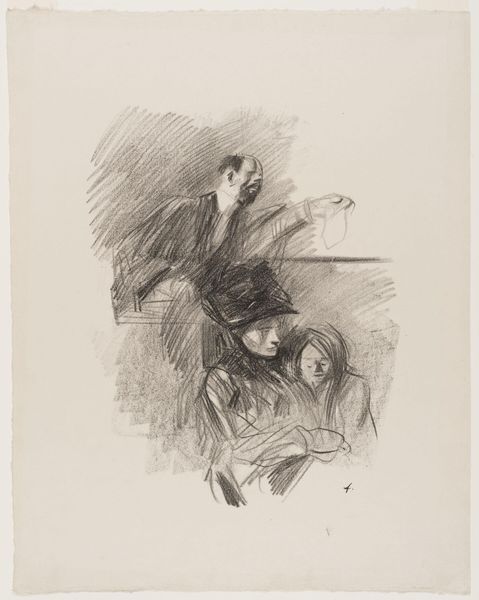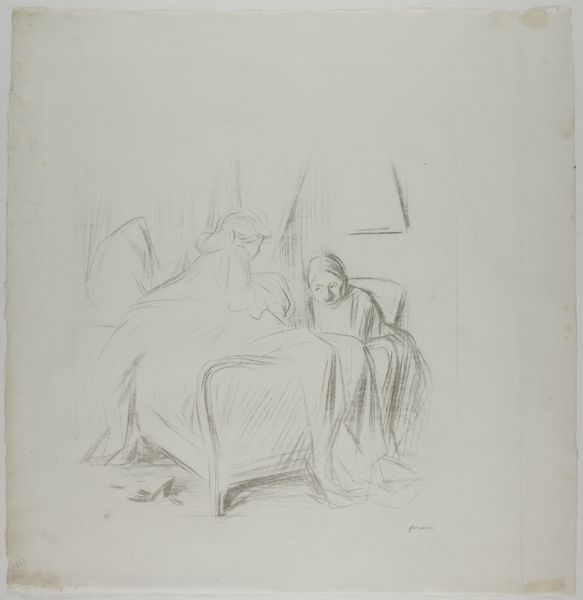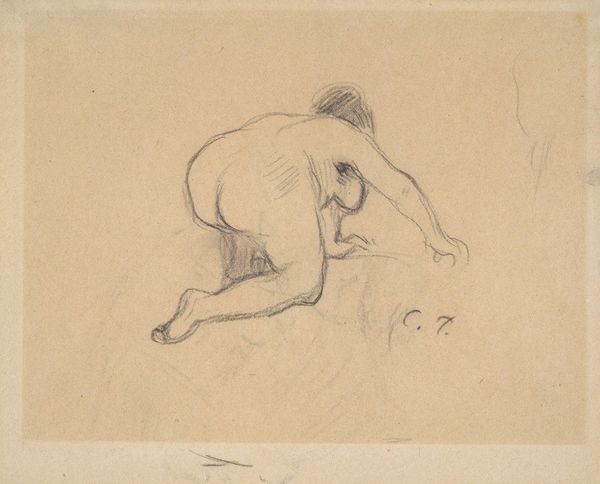
drawing, print, pencil
#
portrait
#
drawing
#
amateur sketch
#
light pencil work
#
quirky sketch
# print
#
impressionism
#
pencil sketch
#
figuration
#
personal sketchbook
#
pencil drawing
#
intimism
#
pencil
#
sketchbook drawing
#
pencil work
#
genre-painting
#
nude
#
fantasy sketch
#
initial sketch
Copyright: National Gallery of Art: CC0 1.0
Curator: Looking at "Nude Woman Drying Her Feet (vertical plate)," by Jean-Louis Forain, it strikes me as a quiet scene. A moment of intimate, personal ritual captured in a simple drawing. Editor: There’s a stark contrast, isn't there, between the implied luxury of the chaise lounge and dressing table and the rather vulnerable, unglamorous depiction of the woman. You can almost smell the chalk of the pencil and the faint mustiness of cheap paper used for prints like this. What do you think he’s trying to say by making such an everyday act the subject of his art? Curator: Well, it points to the increasing democratization of art and imagery in this period. The printmaking process allows for wider distribution and, in turn, broadens the scope of subject matter considered worthy of representation. Forain captures a slice of contemporary life. Editor: Absolutely. And the choice of printmaking also shapes its reception. Its existence hinges on its multiple. It invites repeat engagement and reflection that shifts with the viewer and historical context. I am curious how contemporary audiences perceived this intimacy being brought into the public view. Did it democratize portrayals of the body? Curator: That's a great question! The rise of mass media and printed imagery also reshaped ideas about privacy and public space. Think about how the figure is turned away, obscuring her face. Is this modesty? Or an awareness of being observed, printed and endlessly available for viewing? It could well be a comment on the modern woman’s evolving role in the urban landscape. The production values invite accessibility, yet they maintain a guarded mystery through form and motif. Editor: It makes me think about how the physical act of printmaking is not dissimilar from mass production. The choice of making multiple prints using drawing as an artisanal process to bring a touch of everyday reality into countless homes really adds layers of significance here. It blurs boundaries between traditional arts and everyday life, doesn't it? Curator: Definitely. It invites the viewer to engage with those very boundaries – what we consider worthy of aesthetic representation, and how art practices themselves reflect the broader material and cultural conditions. Editor: Yes. This simple image contains a powerful and insightful snapshot of how perceptions of public and private space, as well as value attributions to art production, were beginning to transform. Thank you!
Comments
No comments
Be the first to comment and join the conversation on the ultimate creative platform.
